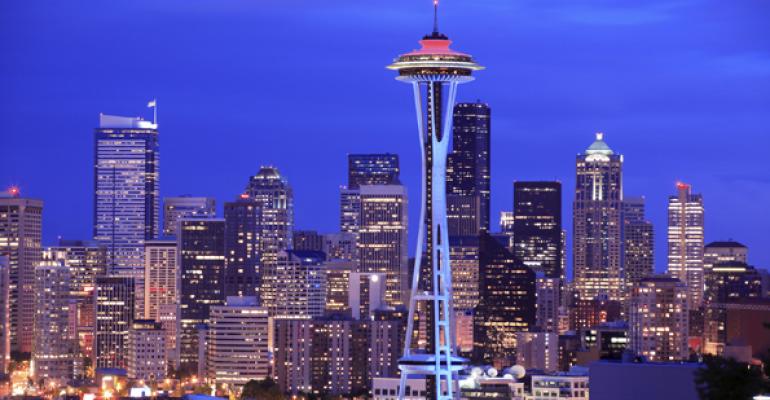The Puget Sound/Seattle region has risen to become one of the nation’s top markets for technology jobs, resulting in plans for more than a dozen new office towers and rapidly increasing central business district (CBD) rents.
According to the recent Global Prime Office Occupancy Costs survey from commercial real estate services firm CBRE, downtown Seattle experienced the most significant annual change in occupancy costs, increasing by 17.3 percent. This is defined in the survey as all occupancy costs including service charges and taxes, corresponding to gross rents. The city’s downtown vacancy rate has dropped to 8.8 percent, back to pre-recession levels and trending downward, according to a third quarter report from commercial real estate services frim Kidder Mathews. Rents for the CBD have increased almost 10 percent year-over-year, according to a report from commercial real estate services firm Colliers, pushing value-minded office tenants to look at class-B and class-C buildings.
The Seattle market is popular with office tenants because of the amount of available talent at bargain wages, says Owen Rice, senior vice president with CBRE. Demand for tech workers has been especially high here, and more than 25,000 job openings in the industry are attracting job seekers from around the country.
“The San Francisco Bay area firms look to Seattle to open up engineering or sales offices,” Rice says. “Historically our rents and costs of living are cheaper, but we have the same quality of talent.”
Though Seattle’s two powerhouse tenants, Amazon and Microsoft, account for much of the local demand, Rice says Seattle has a diverse tenant base, with non-tech firms that include coffee chain Starbucks and retailers Costco and Nordstrom. A mix of tenant types, including Tableau Software, Avvo, Juno Therapeutics, Trupanion and REI, led 1.3 million sq. ft. of leasing activity in the third quarter.
However, Rice admits that tech has been the primary office demand driver, accounting for more than 3.8 million sq. ft. of new office leases in the past 12 months. Just recently, DocuSign Inc. leased 118,830 sq. ft. at Wells Fargo Center downtown, which is owned by Ivanhoe Cambridge and Callahan Capital Properties.
Todd Hartman, senior vice president of asset management for Callahan, says the firm signed more than 400,000 sq. ft. of leases, mostly with tech and health care firms, at Wells Fargo Center and 1111 Third downtown.
“Increased demand from technology tenants and professional services firms has been driving occupancy increases and rents in well-located, quality buildings downtown,” Hartman says.
Developers are trying to capitalize on the high rents offered by new class-A buildings, some being marketed at $49.60 per sq. ft., almost 50 percent higher than the regional average. Rice says there’s a dwindling supply of large blocks of space over 50,000 sq. ft., and construction cranes are ever present downtown, with 15 new office buildings under construction. Though Amazon has filled 10 million sq. ft. of new space in the region, there’s still speculative office construction planned, Rice says.
“There are three projects planned to open in 2017 that should add about 500 basis points to vacancy, and two more in 2018 that would another 500 points,” he says. “People want to work and live downtown. Seattle’s done a very good job maintaining that 24-hour activity, and the new multifamily numbers are staggering, at more than 3,400 new projects when the average had been only about 700 units 10 years ago. It’s definitely a hot market.”

